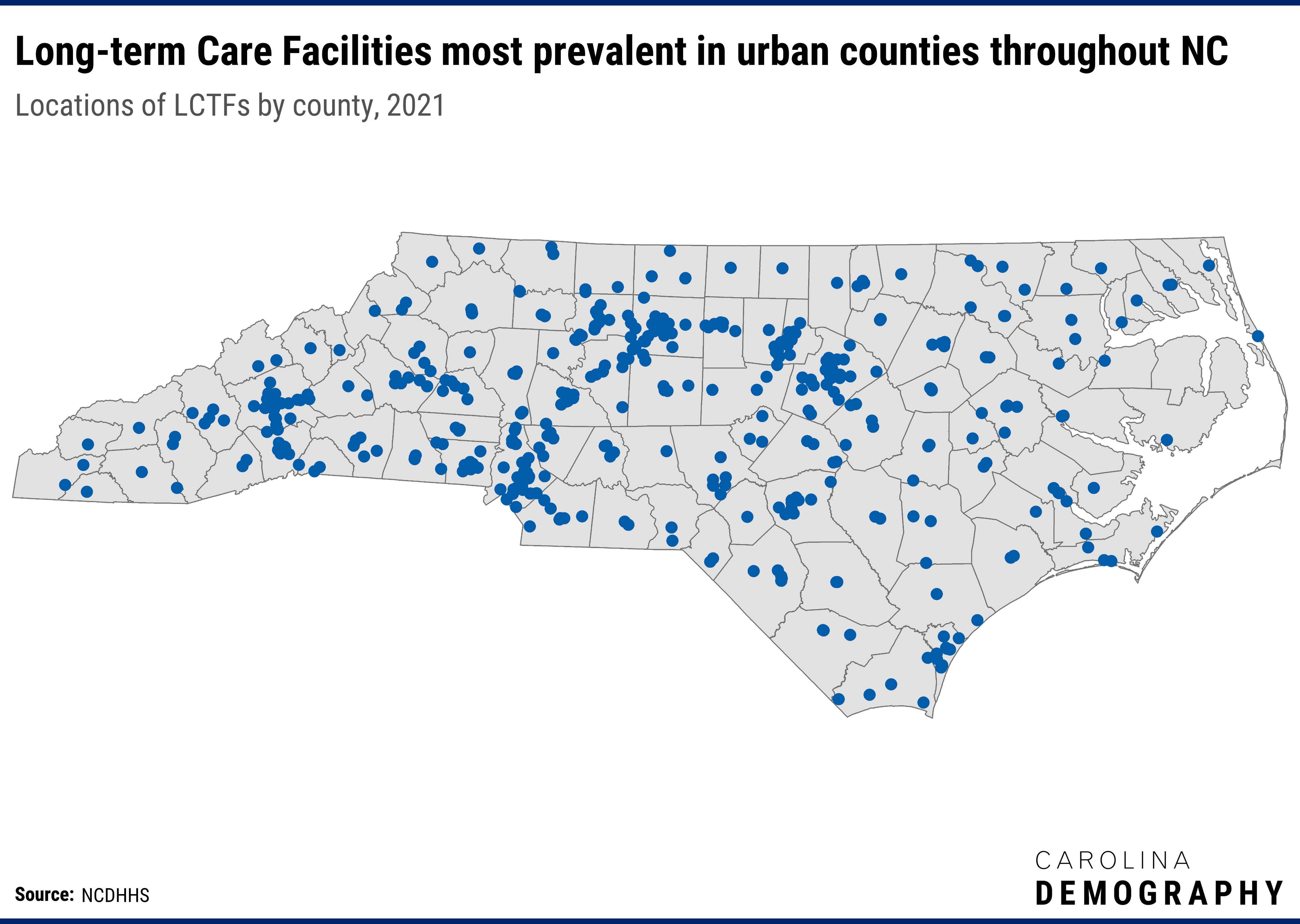COVID-19 and Long-Term Care Facilities in NC

Residents and employees of nursing homes and similar long-term care facilities (LTCFs) are more vulnerable to COVID-19 related illness and death than the general population. In fact, nationally 38% of COVID-19 deaths have been associated with LTCFs. Because of this, the Centers for Disease Control recommended that individuals in LTCFs be prioritized in COVID-19 vaccination distribution plans.
In North Carolina Governor Roy Cooper’s vaccination rollout plan, he included long-term care residents and staff along with health care workers working directly with COVID-19 in the first phase of distribution (Phase 1a). Following Phase 1a, Phase 1b includes all North Carolinians aged 75 years and older, 6.8% of the state population. Vaccinations for both phases have begun, with some individuals in Phase 1b receiving their vaccination as early as the first week of January. These vaccinations are incredibly important and timely given that North Carolina reported its highest new coronavirus cases and deaths in LCTFs during Winter 2020.
There are 423 LTCFs across North Carolina. Mecklenburg County has the highest number of LTCFs (30) followed by Wake (24), Guilford (21), Buncombe (19), and Forsyth (15). These facilities house 45,674 residents, of which 66% are over 75 years of age.

Although these counties have the most LCTFs, the counties with the highest rates of COVID-19 per 100,000 people are: Hyde (11,070), Catawba (10,256), Robeson (10,247), Montgomery (10,191), and Gaston (10,092). Montgomery County is also one of the top 5 counties in North Carolina with the highest rates of COVID-19 related deaths, reporting 260 deaths per 100,000 people. The other four counties are: Rutherford (272), Hertford (228), Columbus (220), and Cleveland (202). These data suggest that although many COVID-19 deaths are related to transmission at LTCFs, there are several other factors that may affect infection rates such as population density and age structure of the general population.
It is important that residents and workers of LCTFs be prioritized in vaccination distribution because of their increased vulnerability and exposure to COVID-19. According to NCDHHS as of February 10, 2021, 70% of the first doses sent to LTCFs have been administered to residents, but just 26% of second doses. While this is promising news, we should still continue to monitor cases and outbreaks within LTCFs and the 65+ elderly population at large.
| County | Number of Covid Cases per 100,000 |
|---|---|
| Hyde County | 11,070 |
| Catawba County | 10,256 |
| Robeson County | 10,247 |
| Montgomery County | 10,191 |
| Gaston County | 10,092 |
| Stanly County | 10,040 |
| Lincoln County | 9,897 |
| Caldwell County | 9,868 |
| Sampson County | 9,787 |
| Cleveland County | 9,780 |
COVID Data by county was last updated 2/4/2021 using Social Explorer Coronavirus Case Data.
Need help understanding population change and its impacts on your community or business? Carolina Demography offers demographic research tailored to your needs.
Contact us today for a free initial consultation.
Contact UsCategories: Health & Environment, NC in Focus

The Center for Women’s Health Research (CWHR) at the University of North Carolina School of Medicine released the 12th edition of our North Carolina Women’s Health Report Card on May 9, 2022. This document is a progress report on the…

Dr. Krista Perreira is a health economist who studies disparities in health, education, and economic well-being. In collaboration with the Urban Institute, she recently co-led a study funded by the Kate B. Reynolds Foundation to study barriers to access to…

Our material helped the NC Local News Lab Fund better understand and then prioritize their funding to better serve existing and future grant recipients in North Carolina. The North Carolina Local News Lab Fund was established in 2017 to strengthen…
Your support is critical to our mission of measuring, understanding, and predicting population change and its impact. Donate to Carolina Demography today.